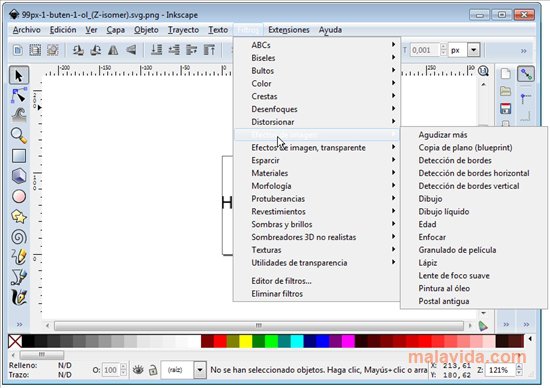
.png)
Launch the Finder application and in the top menu of Finder select “Go” as shown below.On the right side, find “User extensions” and copy the text that appears in the white box beside this label (see below).

On the left side, scroll down to “System” and click on it. A window will pop up and you will probably have to drag the bottom right corner to resize it in order to see everything.
Launch Inkscape and go to the menu Edit -> Preferences. Download the file “extensions.zip” from Inkscape Extensions for Bobbin Lace. Hopefully, this will be fixed in future releases. As of Inkscape 0.92, the Inkscape keyboard shortcuts use Ctrl (^) instead of Cmd (⌘) as a modifier key for commands such as Copy ( Ctrl C) and Paste ( Ctrl V). 
If this does not work, click on the XQuartz icon in the application bar and from the top menu of XQuartz select “Window -> YOUR DOCUMENT NAME – Inkscape.
Where did it go?!?! If you minimize Inkscape, usually you can make it come back by clicking on the Inkscape icon in the application bar. The top of the screen will show the XQuartz menus and below that, in another window, you will see the Inkscape menus. Instead of being at the very top of the screen, they are located at the top of the main Inkscape window.  The top menus for Inkscape are a little different from what you are used to for applications on Mac OS X. Inkscape runs “inside” the XQuartz application. The left one in the red box is for Inkscape and the right one is for XQuartz. When you launch Inkscape on Mac OS X, you will see two applications start in your Application bar as shown below:. NOTE: You will need to install XQuartz first and restart your computer as per the instructions in the link. To install Inkscape on Mac OS X, follow the instructions given here: Inkscape Extensions for Bobbin Lace. Nothing to be concerned about, but there are a few things you should be aware of. Inkscape does not run directly on the Mac OS X operating system. NOTE: As of Inkscape 1.0, these special instructions for Mac OS X are no longer required.
The top menus for Inkscape are a little different from what you are used to for applications on Mac OS X. Inkscape runs “inside” the XQuartz application. The left one in the red box is for Inkscape and the right one is for XQuartz. When you launch Inkscape on Mac OS X, you will see two applications start in your Application bar as shown below:. NOTE: You will need to install XQuartz first and restart your computer as per the instructions in the link. To install Inkscape on Mac OS X, follow the instructions given here: Inkscape Extensions for Bobbin Lace. Nothing to be concerned about, but there are a few things you should be aware of. Inkscape does not run directly on the Mac OS X operating system. NOTE: As of Inkscape 1.0, these special instructions for Mac OS X are no longer required.


.png)





 0 kommentar(er)
0 kommentar(er)
